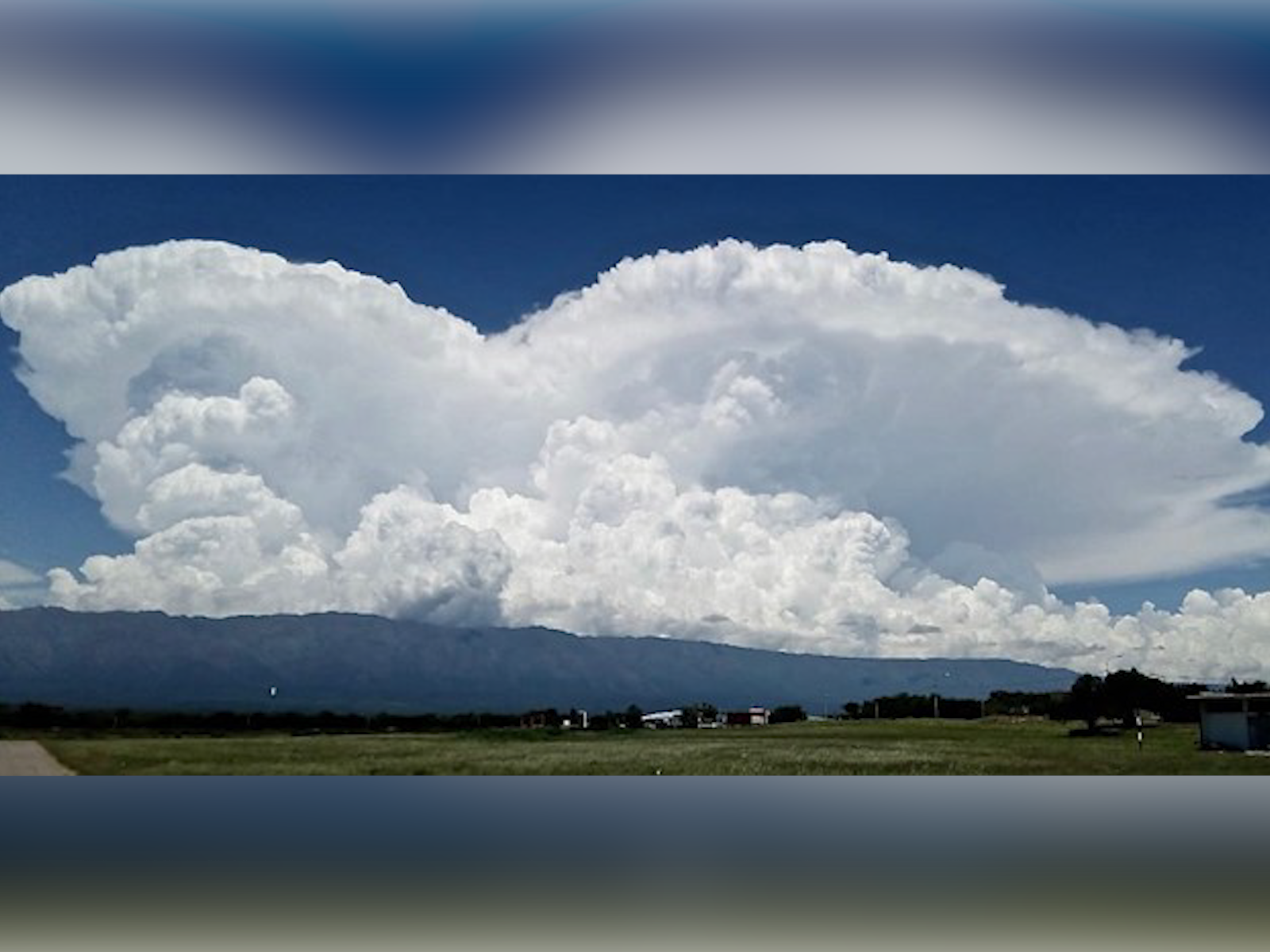A Field Campaign for Improving Understanding of Climate-Critical Cloud Processes
The mountains of central Argentina provide an ideal cloud-generating hotspot to study environmental controls on the evolution of clouds

The deepest storm measured during the field campaign reached an astounding 68,000 feet above sea level.
(Image courtesy of Ramón Alberto Acuña | Servicio Meteorológico Nacional)
The Science
Taking advantage of a storm hotspot in central Argentina, the seven-month long Cloud, Aerosol, and Complex Terrain Interactions (CACTI) field campaign deployed a comprehensive suite of instruments to study processes that control the lives of clouds. In this study, researchers highlight the unique aspects of the collected datasets and summarize how clouds, storms, aerosol particles, and meteorological conditions varied in space and time during the experiment. This foundation is being used in ongoing research to study how the evolution of cloud dynamics, liquid droplets, and ice particles are affected by and alter their surrounding environment.
The Impact
Clouds are a critical component of the climate system through their large effects on solar radiation, precipitation, and the vertical transport of heat, moisture, momentum, and aerosol particles. However, the complex processes that control them are not fully understood. Studies combining CACTI’s comprehensive measurements and high-resolution atmospheric modeling will improve understanding of how cloud and aerosol particles interact with their surrounding environment. These studies will also be critical for evaluating and improving the representation of cloud and aerosol processes in next-generation models to improve weather and climate forecasts.
Summary
CACTI deployed over 50 Atmospheric Radiation Measurement (ARM) Mobile Facility instruments to the previously data sparse Sierras de Córdoba range in central Argentina between October 2018 and April 2019. The heavily instrumented ARM Gulfstream-1 aircraft also performed 22 flights. The campaign’s goals include assessing the impacts of atmospheric circulations, thermodynamic conditions, aerosol particles, and topography on the evolution of clouds and precipitation, as well as the effects of clouds and precipitation on the redistribution of heat, moisture, and aerosol particles.
Extremely frequent clouds were observed in detail with an incredible 160 storm complexes passing overhead. Storms most frequently initiate over the mountains with the larger complexes growing at night. Storms preferentially initiate in the afternoon when the thermodynamic caps that inhibit storm formation weaken, while the available storm-fueling energy peaks during early evening. Interestingly, cloud droplet forming aerosol particles also reach peak concentrations in the early evening, as aerosols form and grow during the daytime but are scavenged by overnight rainfall. The nighttime rainfall also produces cold, moist air with low aerosol concentrations that dams against the mountain barrier and produces frequent drizzling fog. These early results highlight the critical role that the mountains play in regulating the regional climate.
PNNL Contact
Adam Varble, Pacific Northwest National Laboratory, adam.varble@pnnl.gov
Funding
Measurements collected by the CACTI field campaign was supported by the ARM Climate Research Facility. Funding for scientific analysis was provided by the U.S. DOE Office of Science Biological and Environmental Research program as part of the Atmospheric System Research program and the National Science Foundation. Computing support was provided by the Compute and Data Environment for Science at Oak Ridge National Laboratory, National Energy Research Scientific Computing Center at Lawrence Berkeley National Laboratory, the University of Utah Center for High Performance Computing, and the Computational and Information Systems Laboratory at the National Center for Atmospheric Research.
Published: November 10, 2021
A. C. Varble, S. W. Nesbitt, P. Salio, J. C. Hardin, N. Bharadwaj, P. Borque, P. J. DeMott, Z. Feng, T. C. J. Hill, J. N. Marquis, A. Matthews, F. Mei, R. Oktem, V. Castro, L. Goldberger, A. Hunzinger, K. R. Barry, S. M. Kreidenweis, G. M. McFarquhar, L. A. McMurdie, M. Pekour, H. Powers, D. M. Romps, C. Saulo, B. Schmid, J. M. Tomlinson, S. C. van den Heever, A. Zelenyuk, Z. Zhang, and E. J. Zipser, “Utilizing a Storm-Generating Hotspot to Study Convective Cloud Transitions: The CACTI Experiment,” BAMS, 102(8), E1597-E1620, (2021). [DOI: 10.1175/BAMS-D-20-0030.1].